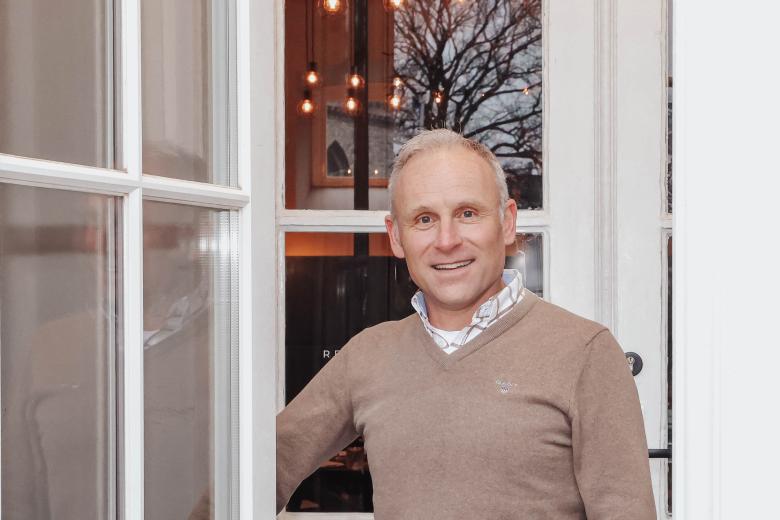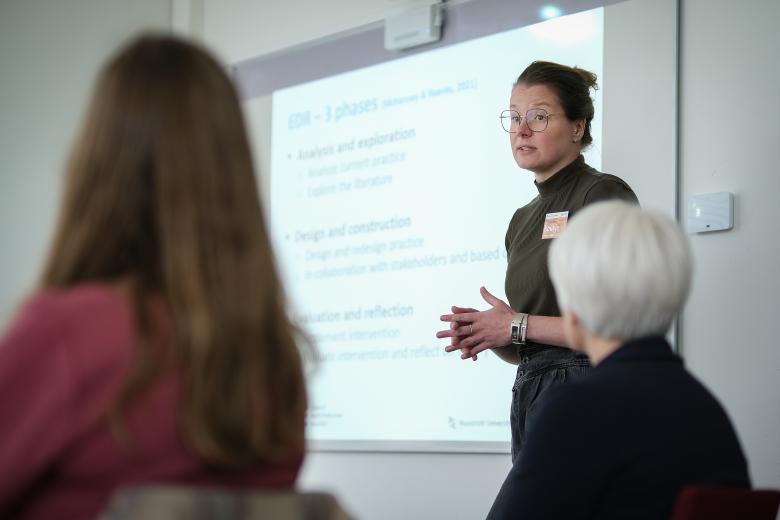The alarming rise of prediabetes – high time for prevention
Prof Dr Miranda Schram researches diabetes, focusing on both cardiovascular and mental health aspects. She is therefore attached to both research institutes CARIM and MHeNs, at Maastricht University's Faculty of Health, Medicine and Life Sciences. She also holds a position at Erasmus MC in Rotterdam. In her research, Miranda Schram uses data from The Maastricht Study, of which she is one of the founders. Research on prediabetes, one of Schram's focus areas, has led to a greater understanding of this stage, that precedes a type 2 diabetes diagnosis. Schram: "We have estimated that 1.3 million people in the Netherlands have prediabetes, many of whom are unaware. These are alarming numbers. Prevention is our most urgent task."
Research
Miranda Schram: "My chair is called 'diabetes epidemiology in particular focusing on cardiovascular and mental health'. Epidemiology stands for population research where you take a sample from the general population. The people who make up the sample are studied very intensively and followed over a long period of time. In my research, I explore diabetes from different angles: its causes and consequences, its impact on the cardiovascular system and mental health, and the biological and psychological mechanisms involved."
Psychological complications of diabetes
"I study, for example, the effects of diabetes on the brain. One psychological complication that is common in diabetes is depression. The common hypothesis is that the disease burden of diabetes causes people to develop depression. However, my research indicates a biological component as well—vascular damage may also play a role. Another consequence of diabetes is ‘diabetes distress’, which is the stress that patients can experience because they are working 24/7 to regulate their glucose levels. Diabetes distress has important implications for diabetes treatment. We are now investigating whether that stress also leads to an increased risk of cardiovascular disease. Our initial findings suggest it does, but we need more data for definitive conclusions."
Social context
“Another factor that I include in my research is whether people's social context affects the development of diabetes. It seems that people with diabetes tend to have smaller, more close-by social connections compared to those without diabetes. We know this relationship exists, just not yet what the cause and what the effect is."
Connecting biological and mental aspects
"In medicine, the mental side is often overlooked. The focus is primarily on classical complications like cardiovascular, kidney, eye, and nerve damage, as well as glucose levels and blood pressure. The mental problems that patients may have receive less attention in the consulting room, whereas in a chronic disease like diabetes, this is very important. This has created a division in diabetes research: internists do research into biological factors and psychologists into the mental aspects of diabetes and the ensuing stress or depression. I try to connect those two sides. Depression significantly impacts how diabetes progresses, and addressing both aspects is crucial.”
Imaging the brain
“My other research focus is on the effects of diabetes on the brain. I am using MRI brain images taken in The Maastricht Study to look at the effects of diabetes on the brain. One indicator of brain health is to look at the presence of small white matter lesions in the brain. These spots indicate that your brain is less healthy. They are more present in people with diabetes, but they also appear as early as the prediabetes phase, when people already have slightly abnormal glucose levels but do not yet meet the diagnosis for diabetes."
The numbers will rise dramatically. That is why action is needed from the government and healthcare.
Prediabetes and prevention
Schram: “In that prediabetes phase, people already suffer brain damage. This finding has sparked discussions on when to diagnose diabetes. To prevent damage, the diagnostic criteria would have to be adjusted. But that is complicated. If you start diagnosing prediabetes as a disease, you would drastically increase the number of diagnosed patients. I work closely with the Dutch Diabetes Fund to draw more attention to this. We published a report last year on the prevalence of prediabetes in the Netherlands. Based on data from The Maastricht Study, we were able to estimate that there are approximately 1.3 million people in the Netherlands (between 40 and 75 alone) who have prediabetes, on top of the 1.1 million people with diagnosed diabetes. Those are really huge numbers that worry me enormously.”
Prevention
“Prediabetes is a complex societal problem. It is estimated that half of the people with prediabetes actually develop diabetes. So the numbers will rise dramatically, with all the consequences. That is why action is needed from the government and healthcare or in fact, the whole society. Prevention is essential. However, in Dutch healthcare, the idea of ‘prevention’ is subordinate to ‘cure’ and that will ultimately become unsustainable—both medically and economically.
Europe is always a bit behind developments in the United States, and in this case that is beneficial. There you see all these alarming numbers of people with diabetes. We must act now, both to raise awareness and to implement preventive measures. People need to see prediabetes as a serious warning sign to take charge of their health. However, motivating people to act is difficult. Most don’t even realize they are at risk. That's why I appreciate initiatives like the Dutch Diabetes Fund’s online risk test which helps people assess their diabetes risk.”
The Maastricht Study
Miranda Schram is an epidemiologist and one of the founders of The Maastricht Study, a large-scale population study. Schram: “The Maastricht Study is a great example of population research. When I joined Maastricht in 2008 I helped develop it into what it is today. Between 2010 to 2020, we included people in the study, over 9,000 in total. They were examined extensively: blood samples were taken, height and weight were measured, cardiac ultrasound, CT and MRI scans were taken and all kinds of questionnaires were filled in. In 2020, we started a follow-up round, asking the same people back to be comprehensively examined again. We are now in the process of those measurements.
The studies I mentioned—diabetes distress, cardiovascular disease, social networks, and prediabetes prevalence—use data from The Maastricht Study. Research where we look at cerebral blood flow is an innovation that we are now including in the second round of The Maastricht Study."
Infrastructure of cohort studies
“There are many excellent cohort studies in the Netherlands. About eight years ago, I took the initiative to tie all these cohort studies together in the Dutch Cohorts Consortium. This includes 11 cohorts from all over the Netherlands, with more than 400,000 participants. We are building an infrastructure to enable data sharing so that we can make statements about the whole of the Netherlands with that combined data."
Impact
Schram: “After my PhD, I decided that I wanted to do something that makes an impact anyway. Something that allows me to directly influence the treatment of patients. I am doing that now with the ‘diabetes distress’ research but also with the prediabetes research by exposing that prediabetes is common and also causes early damage. I am not only interested in ‘how things work?’, but also in ‘how can you translate that into practice to improves lives."
With The Maastricht Study, we can generate a lot of impact. It is really special that we were able to realise this in Maastricht. Compared to other institutions in the Netherlands, Maastricht has significantly more expertise in epidemiology. The role we can play in this field with this is priceless. I am very proud of what we have accomplished."
Text: Eline Dekker
Photo: Joey Roberts
Also read
-
Prof. dr. Mirjam oude Egbrink awarded MUMC+-medal
During her farewell lecture on Friday, 28 November, Prof. Mirjam Oude Egbrink was awarded the MUMC+ medal by Dean Annemie Schols for her distinguished career.
-
Jeroen Hendriks: first professor of Nursing Sciences at MUMC+ in a long time
Jeroen Hendriks (CAPHRI) has been Professor of Nursing Science since last year and will deliver his inaugural lecture on 4 December 2025.
-
You’re human too! Making tutorial sessions at UM more inclusive
How can tutors make small-group learning at UM genuinely inclusive? In this article, Boukje Compen highlights small, practical steps tutors can take to help students connect, create a safe learning environment, and learn from each other’s perspectives.